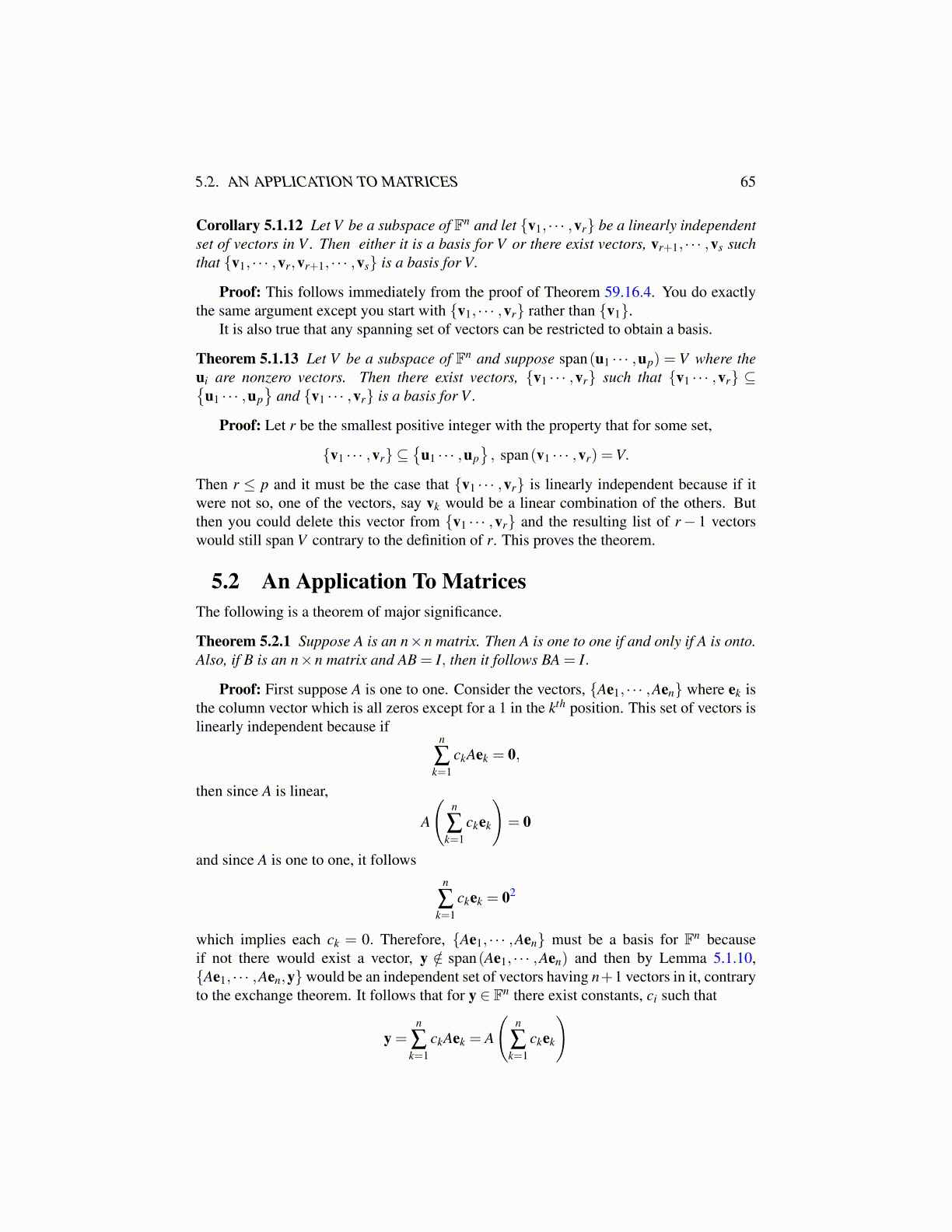
5.2. AN APPLICATION TO MATRICES 65
Corollary 5.1.12 Let V be a subspace of Fn and let {v1, · · · ,vr} be a linearly independentset of vectors in V . Then either it is a basis for V or there exist vectors, vr+1, · · · ,vs suchthat {v1, · · · ,vr,vr+1, · · · ,vs} is a basis for V.
Proof: This follows immediately from the proof of Theorem 59.16.4. You do exactlythe same argument except you start with {v1, · · · ,vr} rather than {v1}.
It is also true that any spanning set of vectors can be restricted to obtain a basis.
Theorem 5.1.13 Let V be a subspace of Fn and suppose span(u1 · · · ,up) = V where theui are nonzero vectors. Then there exist vectors, {v1 · · · ,vr} such that {v1 · · · ,vr} ⊆{
u1 · · · ,up}
and {v1 · · · ,vr} is a basis for V .
Proof: Let r be the smallest positive integer with the property that for some set,
{v1 · · · ,vr} ⊆{
u1 · · · ,up}, span(v1 · · · ,vr) =V.
Then r ≤ p and it must be the case that {v1 · · · ,vr} is linearly independent because if itwere not so, one of the vectors, say vk would be a linear combination of the others. Butthen you could delete this vector from {v1 · · · ,vr} and the resulting list of r− 1 vectorswould still span V contrary to the definition of r. This proves the theorem.
5.2 An Application To MatricesThe following is a theorem of major significance.
Theorem 5.2.1 Suppose A is an n×n matrix. Then A is one to one if and only if A is onto.Also, if B is an n×n matrix and AB = I, then it follows BA = I.
Proof: First suppose A is one to one. Consider the vectors, {Ae1, · · · ,Aen} where ek isthe column vector which is all zeros except for a 1 in the kth position. This set of vectors islinearly independent because if
n
∑k=1
ckAek = 0,
then since A is linear,
A
(n
∑k=1
ckek
)= 0
and since A is one to one, it followsn
∑k=1
ckek = 02
which implies each ck = 0. Therefore, {Ae1, · · · ,Aen} must be a basis for Fn becauseif not there would exist a vector, y /∈ span(Ae1, · · · ,Aen) and then by Lemma 5.1.10,{Ae1, · · · ,Aen,y}would be an independent set of vectors having n+1 vectors in it, contraryto the exchange theorem. It follows that for y ∈ Fn there exist constants, ci such that
y =n
∑k=1
ckAek = A
(n
∑k=1
ckek
)